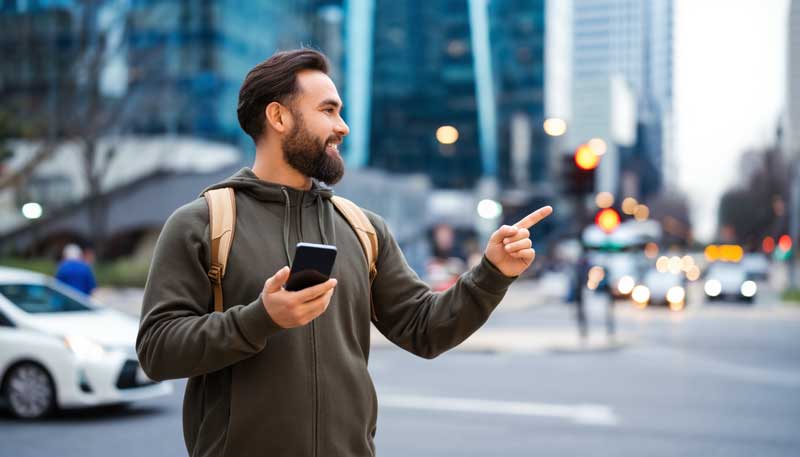Travel ➢ Travel Safety Guide
The Complete Guide to Travel Safety with Smart Technology

Travel safety has evolved dramatically with smart technology, transforming from basic precautions to comprehensive protection systems that work proactively to prevent problems and respond effectively to emergencies. Modern travel safety isn't about living in fear—it's about using intelligent tools to explore the world with confidence and peace of mind.
Smart safety technology creates multiple layers of protection that work together seamlessly, from pre-trip planning tools that identify potential risks to real-time monitoring systems that can summon help instantly when needed. These innovations make solo travel, adventure tourism, and off-the-beaten-path exploration safer than ever before.
Personal Safety Devices and Emergency Communication
Modern personal safety devices combine GPS tracking, two-way communication, and emergency alert systems in compact, wearable formats. These devices can detect falls, medical emergencies, or panic situations and automatically contact emergency services with precise location information and medical details.
Satellite communication devices ensure connectivity even in remote areas without cellular coverage, providing lifelines for hikers, adventure travelers, and anyone venturing into wilderness areas. Many devices offer weather alerts, navigation assistance, and check-in features that automatically notify contacts of your safety status.
Smart jewelry and disguised safety devices provide protection without advertising vulnerability. These discrete options include panic buttons built into jewelry, smartwatches with emergency features, and clothing with integrated safety technology.
Digital Security and Identity Protection
Protecting your digital identity while traveling requires specialized tools and strategies. VPN services encrypt your internet connection and protect sensitive data when using public Wi-Fi networks in airports, hotels, and cafes.
Digital wallets and contactless payment systems reduce the need to carry cash or expose credit cards to skimming devices. RFID-blocking wallets and passport holders prevent unauthorized scanning of payment cards and identity documents.
Cloud-based document storage ensures access to important documents even if physical copies are lost or stolen. Smart systems can automatically upload photos of receipts, tickets, and important documents for secure backup and easy retrieval.
Luggage and Belongings Protection
Smart luggage systems combine GPS tracking, TSA-approved locks, and smartphone connectivity to monitor and protect belongings throughout your journey. Real-time alerts notify you if luggage is moved unexpectedly or if you're moving away from unattended bags.
Anti-theft bags with locking zippers, hidden compartments, and cut-resistant materials provide physical protection while smart tags hidden in luggage provide backup tracking if primary systems fail.
Hotel room security devices can detect hidden cameras, verify room locks are secure, and provide additional door security. Portable door alarms and privacy devices help ensure accommodation safety regardless of lodging quality.
Health and Medical Safety Technology
Medical ID systems and health apps provide critical information to emergency responders in any language, including medical conditions, allergies, medications, and emergency contacts. Smart medical devices can monitor vital signs and detect health emergencies while traveling.
Water quality testing devices and air quality monitors help identify potential health hazards in new environments. UV monitors ensure appropriate sun protection based on local conditions and skin type.
Medication management systems track dosage schedules across time zones and provide reminders for prescription refills. Some systems can locate nearby pharmacies and provide translation assistance for medical needs.
Transportation and Navigation Safety
Smart navigation systems do more than provide directions—they monitor traffic conditions, identify safe routes, and avoid areas with safety concerns or recent incidents. Real-time crime mapping and local safety alerts help inform route decisions.
Ride-sharing safety features include trip tracking, emergency buttons, and identity verification systems. Smart systems can automatically share trip details with trusted contacts and provide safety ratings for drivers and vehicles.
Public transportation apps provide real-time safety information, crowd levels, and alternative routes. Some systems integrate with personal safety devices to provide automatic check-ins and location sharing during transit.
Accommodation and Local Safety Intelligence
Smart accommodation platforms now provide detailed safety information including neighborhood safety ratings, recent incident reports, and verified reviews from other travelers. AI systems analyze multiple data sources to provide comprehensive safety assessments.
Local safety apps provide real-time alerts about weather emergencies, civil disturbances, health advisories, and other potential hazards. These systems can automatically adjust recommendations based on changing local conditions.
Cultural awareness and etiquette apps help avoid unintentional behavior that might create safety risks or cultural misunderstandings in different destinations.
Building a Comprehensive Safety System
The most effective travel safety approach combines multiple technologies and strategies that work together seamlessly. Start with the basics—emergency communication, document backup, and basic tracking—then add specialized tools based on your travel style and destinations.
Regular testing and maintenance of safety systems ensures they work when needed. Most smart safety devices include self-monitoring features and automatic updates that maintain functionality without constant attention.
Share your safety plan with trusted contacts and ensure they understand how to access your location and safety status. Automated check-in systems can reduce worry for family and friends while providing additional safety monitoring.
Balancing Safety and Adventure
Effective travel safety technology should enhance rather than limit your travel experiences. The goal is building confidence that allows for spontaneous exploration and cultural immersion while maintaining appropriate precautions.
Remember that technology supplements but doesn't replace basic safety awareness and common sense. The most sophisticated safety systems work best when combined with situational awareness, cultural sensitivity, and appropriate risk assessment.
Travel safety is ultimately about empowerment—using smart tools to explore the world more freely while ensuring you can handle whatever challenges arise during your adventures.
Share this article:
React to this article: